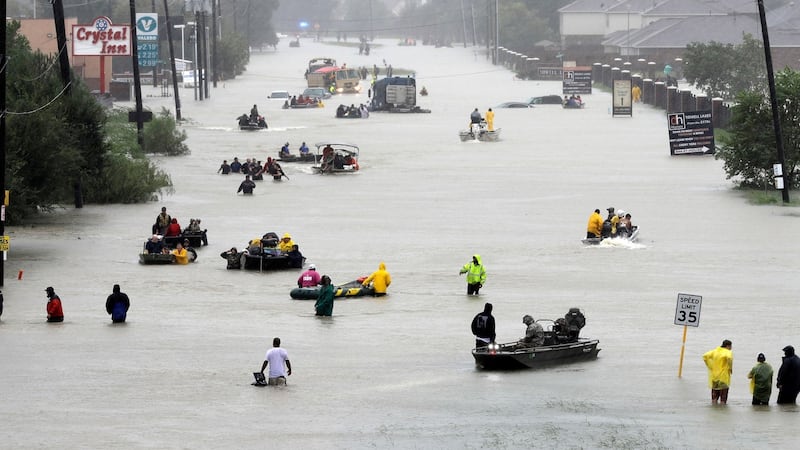A late August hurricane menacing the Gulf Coast. Residents plucked from rooftops. A convention centre repurposed as an emergency shelter. A test of a presidency. Although it is still unfolding, Harvey, now a tropical storm, evokes comparisons to Hurricane Katrina in 2005. Here’s a quick rundown of what we know about similarities and differences between the two.
The cities
Before the storm, New Orleans – with its distinctive Creole-Acadian-French-Haitian-Vietnamese cultural mélange – was a small city of about 455,000 people that lay in large part below sea level, ostensibly protected by a system of levee walls. Its population never fully recovered from the evacuation and destruction and remains below 400,000.
Harvey: Houston is a sprawling, car-dependent, diverse city, low-lying but not below sea level. It has a population of more than 2 million people, with a system of bayous and waterways to manage flooding.
The storms
Katrina: It made landfall near the Louisiana/Mississippi border on August 29th, 2005, as a Category 3 storm and measured 560km across. However, the relatively low classification, based on wind speed, was deceptive because Katrina produced the highest storm surge ever recorded in the United States.
Harvey: It made landfall in Rockport, Texas, on Friday as a Category 4 storm, measuring 320km across, but was quickly downgraded. As of Monday, it was expected to linger for days, causing National Weather Service to warn, "This event is unprecedented and all impacts are unknown."
Deaths and damage
Katrina: One of the deadliest hurricanes ever to strike the United States, Katrina was responsible for 1,833 deaths, and some bodies were untouched for days. The storm inflicted more than $100 billion (€83 billion) in damage, with most of it caused by wind, storm surge and the failure of the levees. Katrina also left 3 million people across the region without power.
Harvey: Local officials have reported at least 10 deaths in Texas since the storm began, but heavy rains and flooding are expected to continue at least through Friday. Most of the damage could be caused by flooding. As for the economy, the Gulf region's capacity as an oil and gas hub – Houston accounted for 2.9 per cent of the nation's gross domestic product in 2015 – does not appear to have been seriously compromised, and economists were predicting that the storm's cost would be less than half that of Katrina's. So far in Texas, there are 300,000 people without power.
Rainfall
Katrina: Rain was not the main problem with Katrina, which yielded 5 to 10 inches of rainfall in a 48-hour period.
Harvey: By contrast, Harvey brought a deluge, with up to 50 inches of rain predicted over the next several days – more than Houston receives in a year.
Evacuation
Katrina: The mandatory evacuation of New Orleans was announced a day before the storm hit. An estimated 100,000 people remained stuck in the city. A few weeks later, in another chaotic evacuation, more than 100 people died leaving the Houston area to escape Hurricane Rita.

Harvey: Houston did not call on residents to evacuate and is now urging those who can to shelter in place. However, as the rain continued on Monday, a growing number of other jurisdictions – like Bay City, which expected 10 feet of water downtown – urged residents to leave.
Assistance
Katrina: The storm displaced more than 1 million people and damaged or destroyed 275,000 homes. Almost 1 million households received individual assistance from the Federal Emergency Management Agency.
Harvey: We don't know yet how many people will be forced out of their homes. But the vast majority of homes in Harvey's path are not insured against flooding, according to figures from the National Flood Insurance Programme. FEMA officials estimated that 450,000 people were likely to seek federal aid.
Conclusions so far
Katrina: Evacuation chaos and mostly unfounded panic over riots and violence made issues of race, poverty and government failures impossible to ignore. The breaches of the levees compounded those problems and represented an engineering failure of grave proportions.
Harvey: Harvey will likely sharpen an ongoing debate over whether Houston, a city driven by property development, has overbuilt at the expense of flood control. While Katrina showed a failure to build well, Harvey – depending on how it plays out – might come to represent a warning about climate change.
New York Times service











